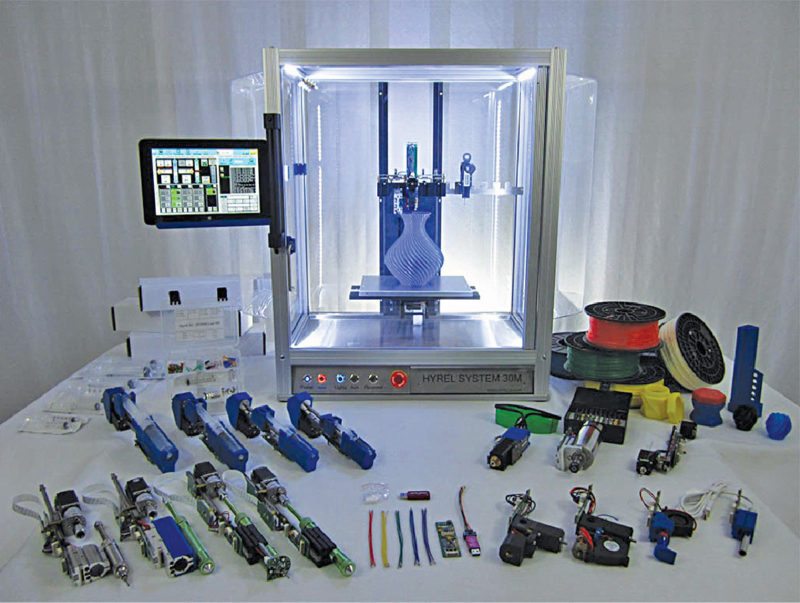3D printing, also known as additive manufacturing, is considered to be a disruptive technology that could power the next industrial revolution. It could transform the way designers visualise concepts, the way companies do businesses and, particularly, the way manufacturers make products.
When the design process moves forward technical decisions are iteratively tested to achieve improved performance, lower manufacturing costs, deliver higher quality and more successful product introductions. In pre-production, 3D printing is enabling faster first object production to support marketing and sales functions, and early adopter customers. And in final production processes, 3D printing is enabling higher productivity, increased flexibility, reduced warehouse and other logistics costs, economical customisation, improved quality, reduced product weight and greater efficiency in a growing number of industries.

Current technologies
A large number of additive processes are now available. The main differences between processes are in the way layers are deposited to create parts and in the materials that are used.
Some methods melt or soften the material to produce the layers. Some examples are: selective laser melting (SLM) or direct metal laser sintering (DMLS), selective laser sintering (SLS), fused deposition modeling (FDM) or fused filament fabrication (FFF).
Some other methods cure liquid materials using different sophisticated technologies such as stereolithography (SLA).
“Different types of 3D printers function on a different technology that uses different materials in different ways. One of the most basic limitations of 3D printing in terms of materials and applications is that, there is no one solution that fits all,” says Karan Sangani, business development manager, MaherSoft.
Attributes to consider
Selection of the right 3D printer depends on the application requirements and matching the key performance criteria that will provide the best all-around value. Here are some 3D printer performance attributes to consider when comparing various 3D printers:
Print capacity. Right from prototyping stage, it is critical to print full-size parts to test the product in real conditions, so the build volume (size) is the key. The largest build volume is available with SLA technology.
Speed vs quality. There is a trade-off between print speed and print quality. The quality of your print (product) depends on the size of the layers you use, but it also depends on the precision of the extruder (nozzle head). Heated build plate and precise nozzle alignment of the machine ensure high print quality. Printers with low layer thickness settings may take longer to produce a final print, but these generally produce a smoother finish. The best printers offer a wide range of quality settings, from fast (but low quality) to slow (but high quality).
Size of filament. All 3D printers have a unique set of temperature, speed and functional ranges in their respective designs, which you should review and consider when selecting filament. Most commonly used printing filaments are ABS, PLA, HIPS and PVA available in, generally, 1.75mm and 3mm diameter.
Availability of support. While buying a 3D printer, look for long periods of warranty. Most large 3D printers, especially those that come from big-name manufacturers, offer some type of specialised support. You can typically contact these companies for ‘live’ help and support over the phone, through email or live chat on their websites.
Sangani mentions, “Most of the buyers make their decision of buying a 3D printer based on cost. We highly recommend buyers to make their decision based on print quality and service support from the manufacturer.”
Frahan Shaikh, founder, Mattermatic, says, “The print time and quality can vary due to factors like layers and print speed. Fine print quality requires more layers in an object but it also increases the printing time.”










